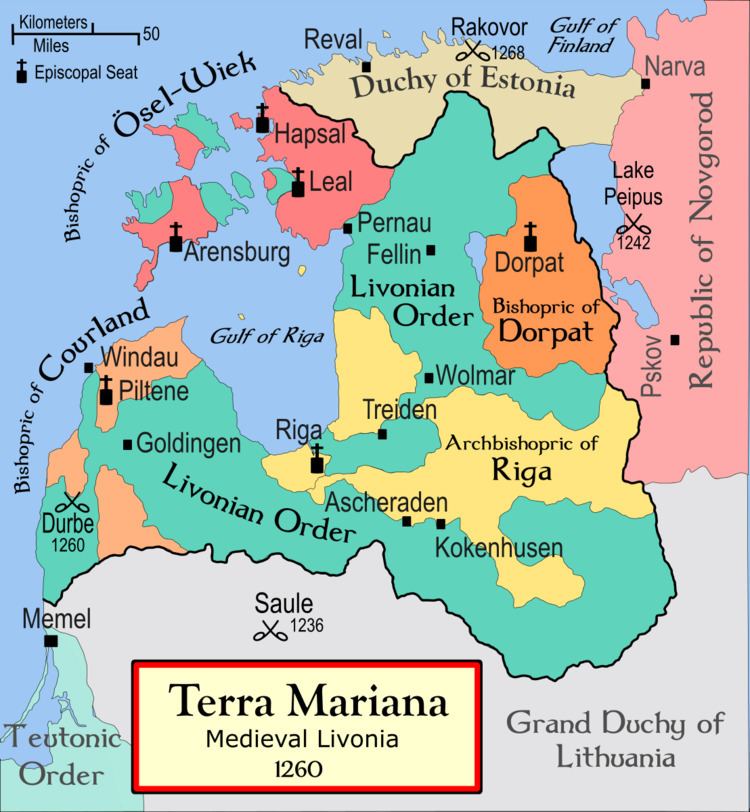Government Principality Date dissolved 1560 | Religion Roman Catholicism 1228–1229 Gottfried Founded 1228 | |
 | ||
1542–1560 Johannes V von Münchhausen Capitals Lihula, Pärnu, Haapsalu, Kuressaare | ||
The Bishopric of Ösel–Wiek (Estonian: Saare-Lääne piiskopkond; German: Bistum Ösel–Wiek; Low German: Bisdom Ösel–Wiek; contemporary Latin: Ecclesia Osiliensis) was a semi-independent Roman Catholic prince-bishopric in what is now Saare, Hiiu and Lääne counties of Estonia.
Contents
History
The bishopric was created as a state of Holy Roman Empire on 1 October 1228, by Henry, King of the Romans. One of the five members of the Livonian Confederation, the seat of the bishop was successively Leal (Lihula), Perona (Vana-Pärnu), Hapsal (Haapsalu), and the castle of Arensburg (Kuressaare) on the island of Ösel (Saaremaa); the cathedral and chapter remained in Hapsal. Administratively the state was divided into two bailiwicks (advocaciae, Vogteien). The bishop was also the lord of the Teutonic Order over its fiefs on the bishopric's territory.
The principality ceased to exist in 1560 when its last prince-bishop, Johannes V von Münchhausen, sold it to Denmark. King Frederick II of Denmark's brother Magnus, Duke of Holstein, was elected bishop on 13 May 1560, despite being Lutheran. Denmark ceded Wiek (Lääne County) to the Polish-Lithuanian Commonwealth in exchange for parts of Ösel belonging to the Livonian Order. Later Ösel became a Danish possession.
